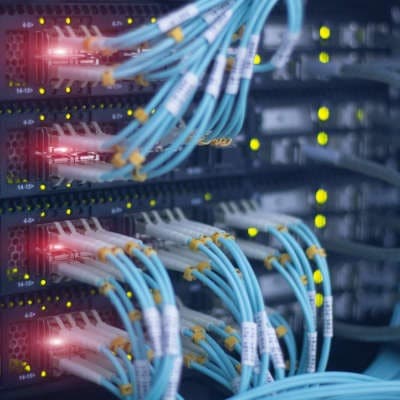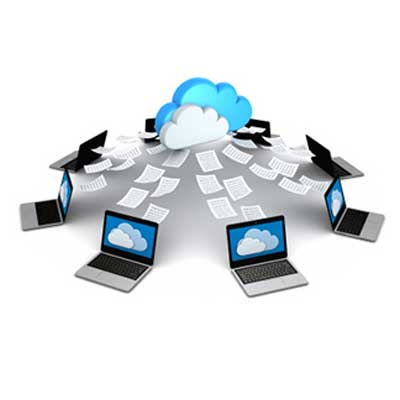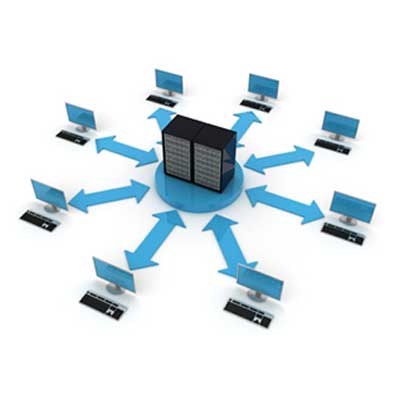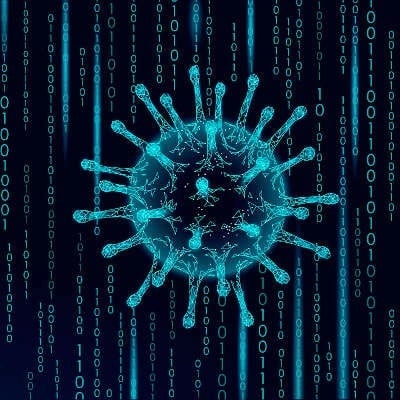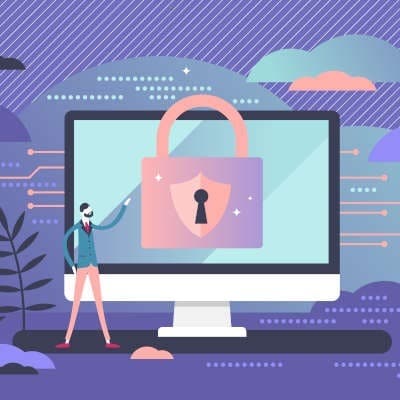Remote Work and Distance Learning While neither working from home or learning online are exactly new, they have exploded in popularity due to recent events. While today’s technology—like Virtual Private Networking, cloud productivity and collaboration tools, and remote monitoring and management—makes these processes much simpler, there are a lot of challenges that these capabilities also present. Considerations like data security, the impact that isolation can have on employees and students alike, and how well certain tasks can be performed are all obstacles to these functions. However, with the right technology, these concerns can be mitigated or resolved so that your processes aren’t left insecure. Online Commerce With the fear that the nature of the current pandemic strikes within so many, combined with the restrictions and safeguards that businesses have put into place, alternative means of doing business have become a huge priority. Specifically, online commerce, the perfect joining of business and social distancing. With businesses no longer able to operate in the way that they are used to, embracing the capabilities that the Internet provides will be critical to their survival. There are still safeguards that naturally need to take place when selling goods and services, only added to those that selling these goods and services online always come with. However, these safeguards are what will help to protect your clients and customers, and therefore preserve your business moving forward as revenue comes in. Digital and Contactless Payments In those businesses whose operations aren’t well-suited to transition to online, alternative means of accepting payment will be important for businesses to adopt so that infection can be minimized as much as possible. With digital payments coming into the fore, this is now made much simpler. Contactless digital payments and online payments alike give you, your clients, and customers an added level of safety and security. Communications Okay, we promised to mention something silly, and here it is. With many people wearing face masks to help stem the spread of COVID-19, a lot of people have discovered a few minor (but frustrating) challenges in doing so. For instance, communications. When wearing a mask, speaking on the phone can become challenging, which is why there is now another device—the c-mask, a smart mask—available to assist them. I wish I was kidding about this, but there is now a device available to attach over your face mask that connects to a mobile device via Bluetooth and allows you to dictate messages and send calls, even translating them to a different language with a subscription. It might look kind of weird, but if it works well, that’s pretty neat. Otherwise, the pandemic has also put the importance of communication to the fore, while 5G and other useful communication technologies have unfortunately been delayed. Hopefully, the issues surrounding 5G will be addressed and overcome so that 5G can be used to help benefit businesses as they regroup and recover. How has your business used technology to sustain itself? Share your experience in the comments!
If you’re a G Suite user, it is almost certain that you repeatedly return to a few documents more often than you do others. Navigating to these documents through Google Drive can get frustrating after a time, so by creating a dedicated bookmark for them, you can bypass your folder hierarchy and get down to business much faster. The process to add one of your Google Docs, Slides, or Sheets to your bookmarks is quite simple: Access your Google Drive. Once there, find and open the document you want to save as a bookmark. In the Address Bar, click the star icon at the right side. A small drop-down menu will appear. Set the name of your shortcut, select Bookmarks bar as the folder it will appear in, and click Done. And just like that, you’ll have an easy means of accessing one of your most-used documents quickly and easily. Subscribe to our blog today for more handy and useful tips!
Seriously, Have You Noticed How Many People Resort to Waving? Think back to the last remote meeting you participated in. You and the other members of the meeting log in, the requisite business is completed, and as everyone signs off… goodbye waves are exchanged? But why? Why do we suddenly feel obligated to wave goodbye to people that we’re meeting with, just because the format of the meeting has changed? According to some experts of behavioral studies, it is this change that is to blame. These waves—and other odd new habits—are nothing but our subconscious attempts to maintain some normalcy as we communicate remotely. Why These Habits Have Normalized Therapists have postulated that, as our typical communications were so suddenly altered by necessity, we have adapted to the relative limitations of remote collaboration and communally developed a new etiquette. Despite their considerable utility (particularly as of late) remote conferencing and other similar solutions have a few downsides that must be considered, largely due to physical limitations. Let’s look at the basic science behind these tools. Your camera and microphone take in information, convert it into a format that can be sent digitally, send it to the person you are conversing with, and once it arrives, translate it back into a format that your collaborator can comprehend, seeing what you said and did. While this all can be completed at a remarkably fast speed, it is far from instant, and still takes relatively much longer than it would if you and your collaborator were speaking face-to-face. Take things like slow internet speeds and other delays, and some delay is effectively unavoidable. The result: awkward pauses, sudden interruptions, and the other issues that so many remote conferences and meetings suffer from. In response, we’ve learned how to incorporate nonverbal communications into our mid-meeting body language, almost subconsciously. Rather than just pressing a button to disconnect from a meeting if the need arises, we take the moment to excuse ourselves from the group and announce our departure via a quick wave to everyone else. It is also likely that you and your team are feeling isolated, as interaction is likely at a horribly low point. This, it is hypothesized, has led to overcompensation. This overcompensation could include nodding along as people speak, raising a hand to signify that you have something to contribute, as well as the farewell waves that so many have adopted as they sign off. How to Communicate Better with Nonverbal Cues Such signals can help to push your conversations forward as you are working remotely. By adding another layer of meaning to what is said, your conversations can move along and be more informative. You’ve likely seen many of these cues in your own experience: Accenting Gesturing or otherwise using your body language to emphasize points and draw attention to certain details. Complementing Matching the language used with the emotion that your body language conveys. Contradiction Alternatively, intentionally mismatching your language to your body language to draw attention. Repetition Returning to and building upon your message over and over to help reinforce it. Substitution Expressing your opinion physically, rather than verbally, to make your message overwhelmingly clear. Looking pleased when you’re pleased, and vice versa. Of course, there are other nonverbal cues that deserve some honorable mention: Backchannels, such […]
1. Security Let’s consider the amount and kind of data that your business accesses, compared to what is assembled on your home network. While your own data is obviously important, the data you have on everyone else is what can get you into serious legal trouble for your business. Therefore, you need to ensure that your router has been configured to be as secure as possible. For instance, you should have a firewall in place to protect your incoming traffic. Any connection that is made to the Internet through your Wi-Fi router could potentially let in a threat, so you need to make sure that you’re mitigating these risks with an enterprise-level firewall. Furthermore, you should make sure that your Wi-Fi router is built with the hardware that a commercial-level router will use. 2. Size The size of your network should be considered as you determine the router that you should be using. In addition to your workstations, you have a sizable number of devices connected to your Internet, including your laptops, tablets, point-of-sale systems, connected printers, and mobile devices. Balancing your network between devices that need to be hardwired and those that can serve you just as well when connected over Wi-Fi should be a priority. 3. Support Levels Depending on how your business is set up, whether you have multiple locations or just one, you may need to have a different kind of router. An edge router is great for sending information from one network to another, while a branch router is suited for an internal network. Of course, the devices that your operations need will be impacted by a variety of circumstances. If your business takes up a large area, or shares space with multiple businesses or residential spaces, or if you will need to support guest users on a regular basis, your required support levels will vary. For more assistance with your Wi-Fi and your other business networking needs, turn to SRS Networks today. Our professionals and their expertise are only a call to (831) 758-3636 away.
2. Ensure Backup Procedures Are Checked Regularly – Many times business owners think that they have a backup system in place only to find out after it’s too late that it hasn’t been working properly. It may seem like your files are being backed up daily, however, the backup could have become corrupt or it is not backing up huge chunks of critical data. Check your backup procedures regularly to ensure they are working properly in order to be sure that ALL of your data can be recovered. In the age of BYOD (Bring-Your-Own-Devices) it is also important to frequently backup data on your employee’s personal laptops, iPads or Blackberrys, so make sure you have a procedure in place to check those backups as well. 3. Make Sure Updated Virus Protection and Firewalls Are Always Enabled – Far too many companies either have no virus protection, expired virus software licenses, or disabled virus programs that aren’t running at all. This makes their business technology vulnerable to virus attacks from emails, spam, data downloads, and unreputable websites. Further, because of inadequate firewall protection about 40% of small to medium businesses will have their network accessed by a hacker. Chances are, when these businesses are attacked they will be entirely unaware it is happening. In order to protect your valuable data and assets, ensure your virus protection is adequate, up-to-date and functioning properly and that your firewall is intact. Finally, don’t forget to update security patches and change passwords when an employee leaves in order to deter hacking attempts. 4. Monitor Server Drives – Dangerously full server drives can bring their own set of problems – ranging from program and server crashes to sluggish email delivery. Proactive monitoring and maintenance of your server can spare your business a lot of problems down the road. 5. Regularly Check Critical Built-In Logs – Very few problems with technology emerge suddenly. These problems typically progress over time and evolve into more serious problems. Frequently review your critical built-in log files to help identify the problem before it has gotten out of control and wreaks havoc on your business infrastructure.
1. How often is employee productivity and customer accessibility or service stalled each day from a downed network or system? 2. How much downtime can your business truly afford and what kind of backup or recovery solutions are in effect when systems are unavailable? 3. What level of IT support can be accessed? Can it be accessed quickly enough to minimize damage? Are you confident that your business can either be back online or be able to access lost data with minimal disruption, no matter what? 4. Is your most critical data frequently backed up? Is the data on the personal laptops, iPads or Blackberrys of employees backed up? Are all backups stored in a location off-site and quickly accessible in the event of theft, fire or flooding? Are you using any custom installed software and is the supplier still in business should this software need to be re-installed or updated? Are account details, licensing agreements, and security settings somewhere on record, and is it duplicated off-site? 5. Are your systems truly protected from theft, hackers, and viruses? Are passwords to sensitive data changed whenever employees leave the company or business unit? 6. When was the last time you tested backup processes to ensure they are working properly? How quick were your back ups? Answering these questions will help you understand if you are needlessly bleeding money every day by subjecting your business to the high hourly rates, service charges, trip fees and wait times of on-call IT support. If you are an SMB, you don’t have to fear technology failure. A trusted MSP can help you resolve these challenges in a more effective and efficient manner.
While corporate-level data losses and insider theft are well publicized, many smaller businesses have also become casualties of data loss and theft. Following a significant data loss, it is estimated that a small-to-medium sized business can lose up to 25% in daily revenue by the end of the first week. Projected lost daily revenue increases to 40% one month into a major data loss. According to The National Archives & Records Administration in Washington, 93% of companies that have experienced data loss, coupled with prolonged downtime for ten or more days, have filed for bankruptcy within twelve months of the incident while 50% wasted no time and filed for bankruptcy immediately. Finally, 43% of companies with no data recovery and business continuity plan actually go out of business following a major data loss. Still, a survey conducted by Symantec SMB revealed that fewer than half of SMBs surveyed backup their data each week. Only 23% of those surveyed said they backup data every day and have a business continuity plan in place. Businesses play on a much bigger playing field than they did two decades ago. Any disruptive technological event – even the smallest of incidents – can have an amplified impact on day-to-day business and profitability. Being proactive with data recovery solutions, and having emergency response procedures in place prior to a disruption or data disaster, is the only way to minimize downtime and soften the impact of such events.
Defining a Twitter Thread A Twitter Thread is pretty much what it says on the box: a chain of tweets, posted one after another, all continuing a connected train of thought. Because Twitter was founded on a principle of sound-byte sharing, this capability to string thoughts together makes a lot of sense, especially to the business trying to get their message across. Think about it—not only are you able to share a lot of information with your audience, you are able to do so in a way that encourages them to read into it, and is easily followed. Let’s review the process of creating one of these threads. Open Twitter on your preferred platform (whether that’s the website, the Android application, or the iOS application) and select Tweet. This button will be in the left-hand sidebar on the web, while it will be on the bottom right-hand corner of the application timeline. Write your tweet, taking care to number it somehow to make it clear where it falls in your thread. Once your tweet is completed, select the Plus (+) button at the bottom right-hand corner of your display. A new tweet box will appear, and you can continue your thoughts by repeating this process. You can also go back to your previous tweets to edit them as needed. There is also the option for you to create a thread from one of your past tweets as well. Visit that tweet in the mobile application and select the Add another Tweet button, and repeat the process outlined above. In this way, even a social media platform can serve your business well. For more technology tips for business success, subscribe to our blog!
Do Macs Get Viruses? In short, the answer is yes, absolutely. Apple computers can get infected with malware like viruses and ransomware. Macs can also suffer from other typical PC problems, such as hardware failure, data loss, slowing down over time, crashes, and more. So where did this misinformation come from? Why do so many casual users tend to think that Macs don’t suffer from the same issues as the Windows PC? Once place to start is Apple’s own (brilliant) advertising. You have to admit, Apple has had some very memorable advertisements over the years. In fact, one of my favorite ad campaigns may be one of the reasons that so many people think that Macs are immune to viruses. Check out the Mac. Vs PC commercial here. These ads are cute and charming and feel honest enough to be true. To Apple’s credit, no lies are being told in the ad. Swarms of new viruses are created for Windows PCs every year, and many of these viruses can’t infect Mac computers. Macs still get viruses, but there are definitely more variants out there for PC. Why is this? PCs Vastly Outnumber Macs In 2018, it was estimated that for every 10 active PCs on the Internet, there was only one Mac. If roughly 90% of the world runs on Microsoft Windows, it makes much more sense for hackers to develop viruses that would affect this broader target. Most businesses use PCs. Most schools and universities use PCs. In fact, most industries tend to use PCs. Most home computing is done on PC as well. That isn’t to say that there is anything wrong with a Mac. Apple makes incredibly solid laptops, and extremely capable desktops. The problem lies with third-party developers. For many businesses, certain core applications don’t have Mac versions. On top of that, when compared to the PC market, Apple doesn’t have a low-end tier for hardware. Your billing department doesn’t need the same computer that your video editor would use, and there isn’t a reason to spend that kind of money on a high-end Mac when a mid-range PC will handle the workload just fine. There really isn’t anything that you can do on a $2000 MacBook that you can’t do on a $2000 Windows laptop – at that point it’s just about preference and what works for your business. On the flipside, there are some limitations to what you can do on that Mac; when it comes to easily connecting and using a business network that’s designed for PCs, and when it comes to the software mentioned above. So, Mac Owners Do Need to Worry About Viruses? Yes sir. Although historically, there haven’t been as many viruses targeting Macs over the years, and it’s always felt like Macs might have a slightly lower risk, that has been changing. According to a recent report by Malwarebytes, the amount of malware on Macs is actually outpacing PCs for the first time ever. It sounds like hackers are relying on the complacency of Mac users. Malwarebytes goes on to report that there was a 400 percent increase in threats on Mac devices between 2018 and 2019. Mac users need to worry about the same threats, and practice the same security hygiene as any other computer user. Whether you […]
“Security Theater” Coined by cybersecurity technologist Bruce Schneier in the early 2000s, “security theater” describes any security efforts that make one seem more secure but do very little to enhance security in the practical sense despite the costs associated with them. The concept is reliant upon the notion that security exists in two forms: the emotional feeling of being secure, and the quantifiable mathematical and scientific improvements that one can make to their protections. For an example, let’s look to a personal anecdote that Schneier shared in a 2007 blog article. In this article, Schneier shared an observation from his visit to the maternity ward after a friend’s child had just been born. The infant had been outfitted with an RFID tag bracelet, the purpose of which being cited as a preventative measure against infant theft. However, at the time that Schneier visited the ward, infant abduction was remarkably rare. This led Schneier to hypothesize that the bangles weren’t adopted as an actual security measure, but instead as a performance of security theater. By “protecting” an infant against “abduction,” the new parents could spend a few moments away from their baby without too much worry. Let’s review the hospital anecdote. While they certainly weren’t free, the tags that were used to “track” the infants were available at an extraordinarily low cost. As a result, making the investment to mitigate an incredibly unlikely issue was considered more acceptable, because it improved the experience of the parents. Schneier also cites an even more recognizable example: the tamper-resistant packaging that was introduced on over-the-counter medications in the 1980s. Poisonings were getting a lot of attention in the press at the time, and despite the statistical likelihood of an actual incident being so low and the tamper-resistant packaging not being all that tamper resistant, the impression it made was thoroughly positive. This is because, in both cases, the performance of security theater helped to make the perceived threat level more in line with the actual threat level. Of course, while the benefits that security theater can offer are very real, so are the costs of putting on such a show. Is Security Theater Worth the Price of Admission? I want you to consider a very real potential outcome of these kinds of displays: what if the piece of security theater you invest your money in is actually making your real security measures less effective? Consider what happened to Target in 2013. The company was hacked when their security teams overlooked the warning signs of a breach as they were buried in a deluge of other notifications. Let’s dive deeper into the threat of “overacting” in your security theater, starting with the situation that Target created. Too Many Alerts I want you to consider what happens when your company chat is a flurry of activities that ultimately don’t involve you. Eventually, you tune out the notifications to try and stay productive, right? The same thing happens with your security notifications if there are far too many of them that ultimately mean nothing. As a result, you and your team will gradually stop paying attention to them, allowing the actual threats to come in. Recruiting an MSP to assist you can help sort out these notifications, with the real threats attended to and interruptions minimized. Too […]





